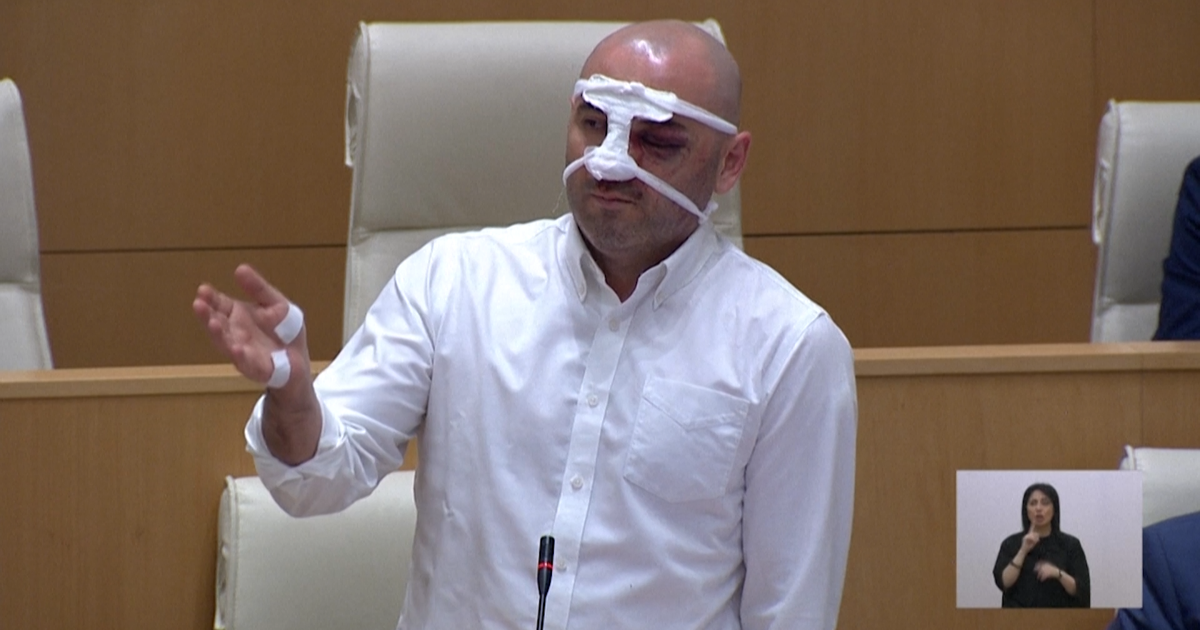AFP, Released Wednesday, January 19, 2022 at 6:05 p.m.
In the dark, Robert Tomlinson picks up stalks called “forced” rhubarb by candlelight. For four generations, despite threats such as global warming, his family has maintained this tradition in the north of England.
In the barn of the family farm in Butsey, near Leeds, hundreds of bright pink plants stand on the roof.
The temperature is about 14 degrees and it is almost completely dark.
Only the sound of the stalks (stems) removed by a professional gesture almost disturbs the religious peace.
With this gentle breeze, Robert Tomlinson, 41, slouches between his compulsive rhubarb plants, benefiting from a protected appearance (PDO).
There is also an explanation for the darkness: “In the absence of light, the plant cannot produce chlorophyll and the sugar goes into the stem rather than the leaf, so you get soft, sweet stems”.
Another advantage: Mandatory rhubarb is harvested in the winter when there are some fresh fruits and vegetables.
In the stalls, it will be grown in the open and sold at a higher price than its cousin, which will not be picked up before May.
Before spending a few weeks in the shelter, the forced rhubarb was in the open for two years.
Once inside, the stems will grow in a few weeks.
“You really hear them grow, it’s + like pops +”, explains Robert Tomlinson, who lives in a corner of Yorkshire, nicknamed the “Rhubarb Triangle” because of the producers’ concentration.
– Rediscovery –
His grandfather started growing this plant native to Asia and Russia in the late 1880s.
Until the 1960s, its sour taste was popular among the English. Then it went out of fashion and faced less demand, which many manufacturers threw away in pieces.
Previously more than 200, now only ten.
But in recent years, chefs like Tom Sensei, who oversees distribution at 26 Cranes and Stony Street, two London restaurants, have rediscovered this product.
“The number of recipes is endless,” he describes, adding a few slices of orange juice and a little ginger, before turning brown.
Compared to this chef, “it’s a little sweeter” than the free-range rhubarb that is “stringy”. He does not hesitate to combine it with fish or duck.
Mandatory rhubarb is available in beverages ranging from gin-flavored soda to sparkling wine or syrup.
This renewed interest allowed Robert Tomlinson to overcome the epidemic without much damage, even though the restaurants had been closed for some time.
After storing in red and yellow pockets labeled “Harpinger” (cultivated variety), he exports his produce “all over the country,” but also to “Paris, Berlin, Zurich, and New York.” Pride.
As demand has increased in recent years, Brexit has complicated its exports to Europe, which are now more expensive.
The production requires “a lot of work” and “it’s hard to find people to do it”, he said, only to be helped by his wife Paula. On weekends, their two children, ages 13 and 14, shake hands with them.
Another challenge: global warming causes mild winters.
“In the past, the season started much earlier than today. Climate change has delayed it a bit,” Robert Tomlinson explains. This is a problem “because (plants) need to be cool in the fall to regain energy before covering them.”
Despite these dangers, the process has remained the same since his grandfather’s time.
“The method of farming has been almost unchanged since then because there is no other way. So by candle light, I will pick by hand.”

“Alcohol enthusiast. Twitter ninja. Tv lover. Falls down a lot. Hipster-friendly coffee geek.”









More Stories
Georgian MP appears in parliament after assault
Russian attack on Odessa kills three
Trump convicted of contempt, threatened with “jail” at his trial in New York – 04/30/2024 11:36 pm